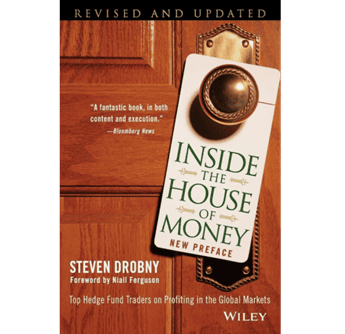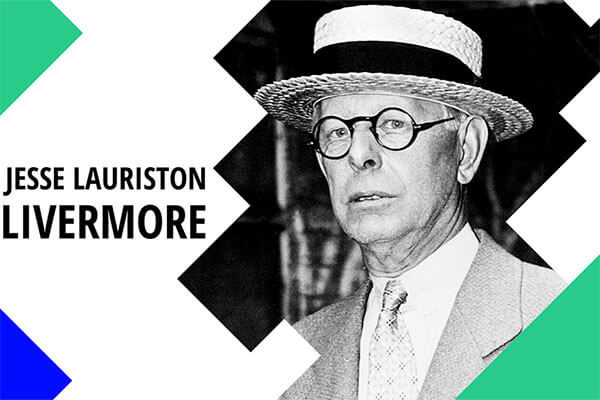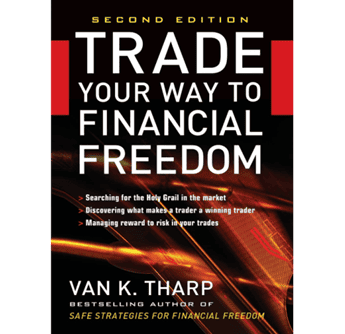
Inside the House of Money reveals that elite global macro investors succeed less by predicting the future and more by managing uncertainty, practising disciplined risk control, and maintaining intellectual humility.
That practical conclusion arises from Steven Drobny's interviews with leading macro practitioners, who explain how they think, how they organise risk, and how they behave when markets become disorderly.
This article will examine Drobny's methodology, summarise the book's key themes, profile representative managers, explain the book's lessons on risk and psychology, and discuss contemporary relevance.
Understanding Inside the House of Money: The Book and Its Purpose
Steven Drobny wrote Inside the House of Money to open a window into the decision making of global macro hedge fund managers. He used detailed interviews to capture the mental models, risk frameworks and behavioural habits that characterise the most successful practitioners.
The purpose of the book is not to hand readers a set of trading rules. Instead it aims to reveal the thought processes behind heavy financial decisions so that both professionals and serious investors may learn how experienced managers frame uncertainty and organise portfolios.
Drobny's approach privileges qualitative depth. He prioritises insight over replication. The interviews reveal common patterns as well as idiosyncratic practices. Reading the book encourages a shift from viewing markets as puzzles to viewing them as environments in which survival is a prerequisite for any long term success.
Inside the House of Money: Drobny's Method and Narrative Style
Drobny adopts a journalist's rigour combined with a researcher's discipline. He travelled to meet managers in different financial centres.
He asked questions that moved beyond trade mechanics toward mindset, routines and risk tolerances. The narrative style blends technical vocabulary with human detail.
This combination makes the book readable to practitioners and accessible to non-specialists with a serious interest in markets.
The interviews are not transcripts of trades. They are structured conversations that reveal how managers think about scenario building, position sizing and exit rules.
Drobny repeatedly directs attention to the process rather than to isolated successes. The methodological objective is clear: show how elite decision makers interrogate information and then convert that analysis into manageable bets.
Key Themes in Inside the House of Money: What Recurs Across Interviews

The interviews in Inside the House of Money emphasise a small set of durable themes. These themes show up in many forms across different managers, time periods and asset classes. The table below summarises the central themes and what they mean in practice.
| Theme |
Practical Meaning |
Representative Behaviour |
| Risk Management First |
Prioritise survival and preserve optionality. |
Conservative sizing, active hedging, strict stop rules. |
| Conviction with Flexibility |
Hold strong views but change them quickly when evidence shifts. |
Rapid position reduction when a thesis fails to validate. |
| Global Perspective |
Combine macroeconomic, political and market signals across regions. |
Cross-asset hedges and opportunistic reallocation. |
| Psychological Discipline |
Maintain composure under stress and avoid emotionally driven trades. |
Pre-defined trading routines and post-mortem review. |
These themes reinforce one another. Risk management underpins the ability to remain flexible. A global perspective creates optionality. Psychological discipline allows for clear execution during episodes of market stress.
Profiling the Managers in Inside the House of Money: Patterns and Differences
Drobny's cast includes managers with diverse backgrounds. They operate in different markets and sometimes hold sharply opposing views. The diversity is instructive because it shows that no single personality type or single technique guarantees success. Nonetheless, several behavioural and organisational patterns emerge.
Common patterns include:
A tendency to view positions as hypotheses to be tested rather than commitments to be defended.
The habit of keeping capital allocated to liquidity or cash equivalents as insurance.
Frequent use of scenario analysis to reveal potential asymmetric payoffs.
Differences are also informative. Some managers favour concentrated, high conviction trades. Others prefer broad diversification across small, uncorrelated exposures. The book does not insist that one approach is superior.
Instead, it shows how each approach must be matched to a manager's risk tolerance, operational capacity and psychological profile.
Inside the House of Money: Risk, Leverage and Liquidity
Risk, leverage and liquidity form a triptych that determines the survivability of a macro strategy. Drobny's interviews highlight how elite managers treat each element.
Risk management is a continuous activity. Managers define risk not only as the probability of loss but as the interaction of loss with the possibility of recovery. Leverage is a tool that amplifies both return and vulnerability. Many interviewees describe leverage as useful only when it is paired with robust risk limits.
Liquidity appears repeatedly as a structural hedge. A manager who can access liquidity when others cannot will often capitalise on dislocations. Conversely, failure to preserve liquidity can transform a temporary drawdown into a permanent impairment of capital.
The table below contrasts prudent and imprudent approaches to these elements.
| Element |
Prudent Approach |
Imprudent Approach |
| Risk |
Model downside scenarios and limit exposure size. |
Rely on historical returns without adequate stress testing. |
| Leverage |
Use leverage selectively with margin buffers. |
Maximise exposure based on short term confidence. |
| Liquidity |
Maintain readiness to meet margin calls and to step into opportunities. |
Fully deploy capital with no dry powder for crises. |
Drobny's interviews demonstrate that managers who combine prudent risk controls with strategic use of leverage and preserved liquidity tend to survive and prosper.
The Psychological Edge in Inside the House of Money

Psychology is as central to macro success as economics. The book repeatedly highlights temperament, routine and behavioural guardrails. Elite managers cultivate intellectual humility. They accept that markets are complex and that certainty is rarely attainable.
Examples from the interviews include deliberate routines for handling stress, methods for suspending judgment during noisy periods, and systematic post-trade reviews to extract lessons.
Several managers emphasise the value of keeping ego out of position sizing decisions. Another recurring idea is that the market gives frequent signals and that the skill lies in listening to those signals rather than enforcing a narrative.
Behavioural tools described in the book are simple but effective. They include explicit stop rules, decision checklists and redistributive rules for trimming positions as unrealised profits grow.
Relevance of Inside the House of Money in Contemporary Markets

Although the book was published in 2006. its lessons retain relevance in the years that followed. The practices described foreshadowed the trials of the 2008 financial crisis and subsequent market dislocations. The emphasis on liquidity, risk control and psychological preparedness reads as prescient when considered against later market events.
Contemporary markets introduce new features such as faster information flows and algorithmic trading. However, those features change execution and market microstructure rather than the foundational questions of how to manage uncertainty and limit ruin. The behavioural and structural lessons in Drobny's interviews remain applicable to both institutional and sophisticated retail investors.
Practical Takeaways from Inside the House of Money
This section translates interview insights into practical recommendations that investors can apply to their own portfolios. The guidance is deliberately general to preserve applicability across different account sizes and time horizons.
| Lesson |
Practical Action |
| Prioritise Risk |
Define acceptable drawdown, set position size limits, and maintain contingency liquidity. |
| Trade with Evidence |
Convert ideas into testable hypotheses and monitor outcomes against objective triggers. |
| Preserve Flexibility |
Hold allocation to cash or low correlation assets to take advantage of dislocations. |
| Practice Psychological Hygiene |
Use checklists, keep a trading journal, and conduct regular post-trade analysis. |
Applying these rules should improve the probability of long term survival and create the conditions in which well designed opportunities produce returns.
Criticisms and Limits of Inside the House of Money
No single book can be exhaustive. Inside the House of Money has limitations and critics have raised reasonable points. The book relies on interviews, which are necessarily subjective. Some readers may find the lack of trade level data frustrating. Others may wish for greater emphasis on quantitative and systematic methods that have become more prominent since publication.
Despite these limits, the book's chief value lies in its qualitative depth. It provides mental models and behavioural lessons that are not easily captured by backtests or by purely quantitative studies.
Frequently Asked Questions
Q1: Is Inside the House of Money suitable for beginner investors?
Yes. The book is readable for beginners who are prepared to study and to reflect on behaviour and risk. However, beginners should not treat the interviews as trade manuals.
Q2: Does the book provide specific trading strategies?
No. The book focuses on the thinking processes, frameworks and discipline used by successful managers. It does not provide step by step strategies or exact trade blueprints.
Q3: How does Inside the House of Money compare with later works by Drobny?
Later works expand on macro themes with additional context, in particular after the 2008 crisis. Reading the books together provides a useful before and after perspective on market stress.
Q4: Can retail investors apply the lessons of the book?
Yes. The most important lessons are behavioural and structural. Retail investors can apply these by improving risk controls, preserving liquidity and practising disciplined reflection.
Q5: Which chapters contain the most practical lessons on risk management?
Chapters that focus on manager routines, position sizing and liquidity management tend to provide the clearest practical advice. Readers seeking actionable takeaways should pay special attention to those sections.
Conclusion
Inside the House of Money is a book about the intellectual and behavioural architecture of macro investing. Its chief contribution is to make transparent the ways in which experienced managers frame risk and survive uncertainty. The interviews show that success is rarely the product of clairvoyance. It is more often the product of consistent process, prudent risk allocation and the ability to learn from error.
For investors who wish to build durable habits, the book provides a catalogue of practical routines and a philosophical orientation. The broad lesson is simple and consequential: manage risk first, preserve optionality, and cultivate the psychological discipline required to act clearly when markets become disorderly.
Disclaimer: This material is for general information purposes only and is not intended as (and should not be considered to be) financial, investment or other advice on which reliance should be placed. No opinion given in the material constitutes a recommendation by EBC or the author that any particular investment, security, transaction or investment strategy is suitable for any specific person.






























